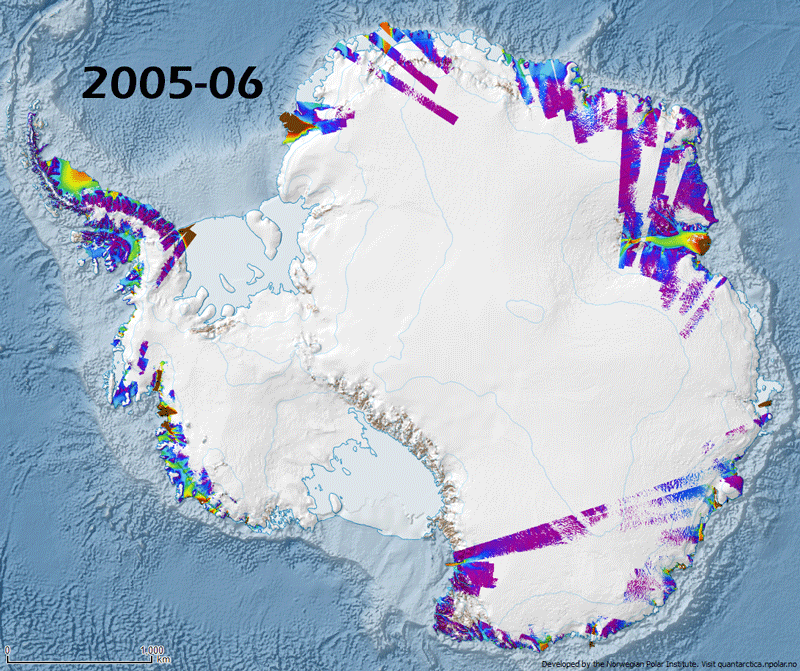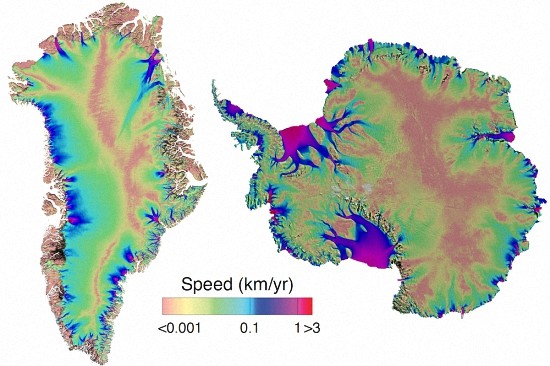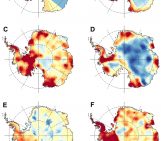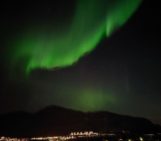
Fig 1: Map series of annual ice sheet speed from Mouginot et al. (2017). Speeds range from 0 (purple) to 1000+ (dark brown) m/yr. [Credit: George Roth]
Today’s Image of the Week shows annual ice flow velocity mosaics at 1km resolution from 2005 to 2016 for the Antarctic ice sheet. These mosaics, along with similar data for Greenland (see Fig.2), were published by Mouginot et al, (2017) last month as part of NASA’s MEaSUREs (Making Earth System Data Records for Use in Research Environments) program.
How were these images constructed?
The mosaics shown today (Fig 1 and 2) were built by combining optical imagery from the Landsat-8 satellite with radar (SAR) data from the Sentinel-1a/b, RADARSAT-2, ALOS PALSAR, ENVISAT ASAR, RADARSAT-1, TerraSAR-X, and TanDEM-X sensors.
Although the authors used the well-known techniques of feature and speckle tracking to produce their velocities from optical and radar images, respectively, the major novelty of their study lies in the automation and integration of the different datasets.

Fig.2: Mosaics of yearly velocity maps of the Greenland and Antarctic ice sheet for the period 2015-2016.Composite of satellite-derived yearly ice sheet speeds from 2005-2016 for both Greenland and Antarctica. [Credit: cover figure from Mouginot et al. (2017)]
How is this new dataset useful?
Previously, ice sheet modellers have used mosaics composed of satellite data from multiple years to cover the entire ice sheet. However, this new dataset is one of the first to provide an ice-sheet-wide geographic scale, a yearly temporal resolution, and a moderately high spatial resolution (1km). This means that modellers can now better examine how large parts of the Greenland and Antarctic ice sheets evolve over time. By linking the evolution of the ice sheets to the changes in weather and climate over those ice sheets during specific years, modellers can calibrate the response of those ice sheets’ outlet glaciers to different climate conditions. The changes in the speeds of these outlet glaciers have important consequences for the amount of sea level rise expected for a given amount of warming.
How can I start using this data?
The yearly MEaSUREs data is hosted at the NSIDC in NetCDF format. The maps shown in the animated image were made using Quantarctica/QGIS (for more information on Quantarctica, check out our previous post E). QGIS natively supports NetCDF files like these mosaics with no additional import steps. Users can quickly calculate new grids showing speed, changes in velocities between years, and more by using the QGIS Raster Calculator or gdal_calc.
References/ Further Reading
Mouginot, J., Rignot, E., Scheuchl, B., & Millan, R. (2017). Comprehensive Annual Ice Sheet Velocity Mapping Using Landsat-8, Sentinel-1, and RADARSAT-2 Data. Remote Sensing, 9(4), 364. http://dx.doi.org/10.3390/rs9040364
Image of the Week – Quantarctica: Mapping Antarctica has never been so easy!
Image of the Week – A high-resolution picture of Greenland’s surface mass balance
Written with help from Jelte van Oostsveen
Edited by Clara Burgard and Sophie Berger
 George Roth is the Quantarctica Project Coordinator in the Glaciology group (@NPIglaciology) at the Norwegian Polar Institute. He has spent the last several years helping researchers with GIS, cartography, and remote sensing in both the Arctic and Antarctic.
George Roth is the Quantarctica Project Coordinator in the Glaciology group (@NPIglaciology) at the Norwegian Polar Institute. He has spent the last several years helping researchers with GIS, cartography, and remote sensing in both the Arctic and Antarctic.




